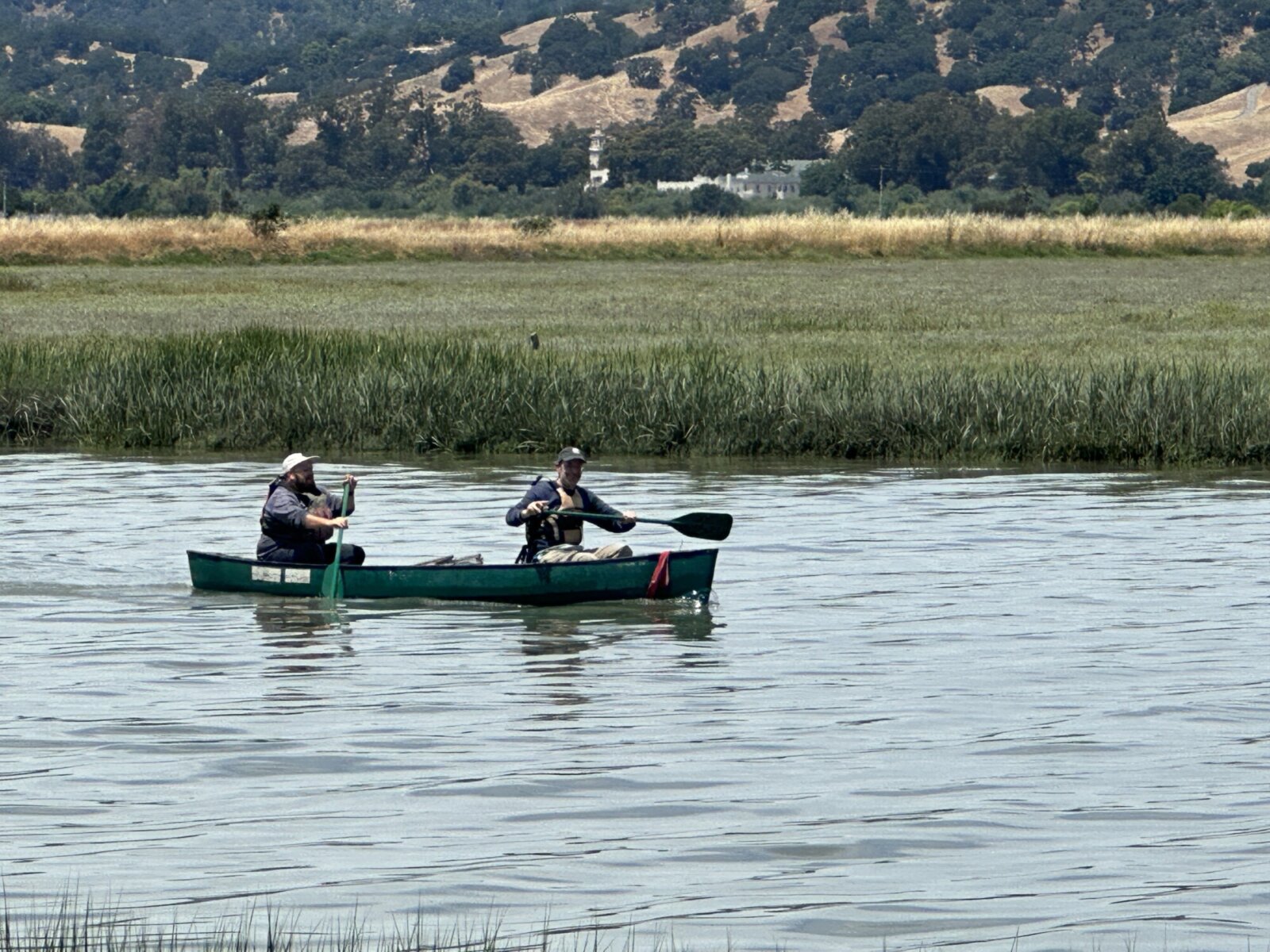
San Francisco Bay’s Living Lab
Estuarine expert Dr. Matt Ferner explains why scientists flock to China Camp, and what they discover.
They paddle canoes and kayaks. They squint their eyes to read tiny numbers on monitors. They clomp through mud and across slippery rocks to look for oysters and other waterfront creatures. Through rain, sun, fog, and wind, they’re here—the researchers and scientists of the San Francisco Bay National Estuarine Research Reserve (SF Bay NERR). Since 2003, they’ve been on site at the park, conducting research to better understand wetland ecosystems, the challenges that these marshlands face, and why it matters.

To get a big-picture understanding of why China Camp State Park serves as such an important location for studying tidal wetlands, we turned to Dr. Matt Ferner, director of research for the SF Bay NERR, part of a national network of coastal research areas.
Dr. Ferner, thanks for all you do to better understand and protect China Camp. In your view, what makes the tidal wetlands at China Camp so special?
The park’s unbroken transition between the bay to wetlands and then to uplands is super rare in an urban estuary like San Francisco Bay. At China Camp, the marsh that’s close to North San Pedro Road, spreading out around Turtle Back Hill to Jake’s Island, is a tidal marsh that’s thousands of years old. More than 90 percent of the marshes elsewhere around San Francisco Bay have been diked, drained, filled, or otherwise degraded to the point that they no longer function as tidal wetlands.
China Camp’s wetlands may not have been diked or degraded, but do they now face other challenges?
The biggest challenge right now is climate change, in all its manifestations. And it’s not just the impacts of sea-level rise, but also the warming temperatures and extreme swings between wet and dry years. These changes are having broad impacts, such as allowing invasive species to spread more quickly, or creating conditions that increase the spread of disease.
How can estuarine research done by the SF Bay NERR team help protect against the impacts of climate change?
Right now, the average water level in San Francisco Bay is rising a couple of millimeters per year. Because of global warming we expect that rate of change to increase dramatically over the coming years. Historically, China Camp has had one of the most stable wetlands around, with the marsh surface accumulating mud and building up at the same rate as rising water levels.
But if bay water rises too fast due to climate change, the marsh surface won’t be able to keep up and the plants will get too deeply inundated and die. The marsh first will start to transform, with pickleweed being replaced by cordgrass which now grows further out in the bay. With increasing inundation, the remaining cordgrass will eventually change to mudflat. Our researchers are trying to track that change, so that we can identify wetland areas that have the best chance of survival, then prioritize them for conservation.
Do you do more than field research in our marshlands?
Yes. Part of our research focuses on infrastructure—like North San Pedro Road—as well as cultural resources. Everybody’s got something at stake at China Camp. We aim to work with all of the stakeholders, whether they’re local communities, groups interested in preserving cultural assets like Coast Miwok sites and the China Camp Village, or government officials.
We encourage the use of natural and social science research, and we serve as “informed mediators” to bring everyone into the know, and make sure their concerns and interests are heard and acknowledged by the decision makers—including California State Parks, the Bay Conservation and Development Commission, state and county agencies, and tribal leaders.
Do you feel like you’re making a difference?
Oh yes. Our work is split between studying China Camp and other parts of the San Francisco Bay estuary, and working with the NERR’s national program, with sites all over the country. Right now it’s my dream job, applying my brain to big-scale national issues, but also getting to go out into nature and collect environmental data, and to work with technicians who have a deep understanding of what they’re studying. I can see real benefits and synergy when working at both national and local scales.
What are your hopes for the future?
One thing that I wish could be better is the public’s understanding of environmental science. In the 15 years that I’ve been doing this, we seem to be facing the same baseline of limited understanding. We so often get the same questions about what tides are, what a wetland is, and why they’re important. People get stuck on the same issues—it’s hard to feel like local understanding has really ratcheted up. We are all in this together, as the old adage goes: “walking backwards into the future.” We must do better at learning from the past. So we keep on researching, and sharing what we discover.
—by Harriot Manley/FOCC volunteer

